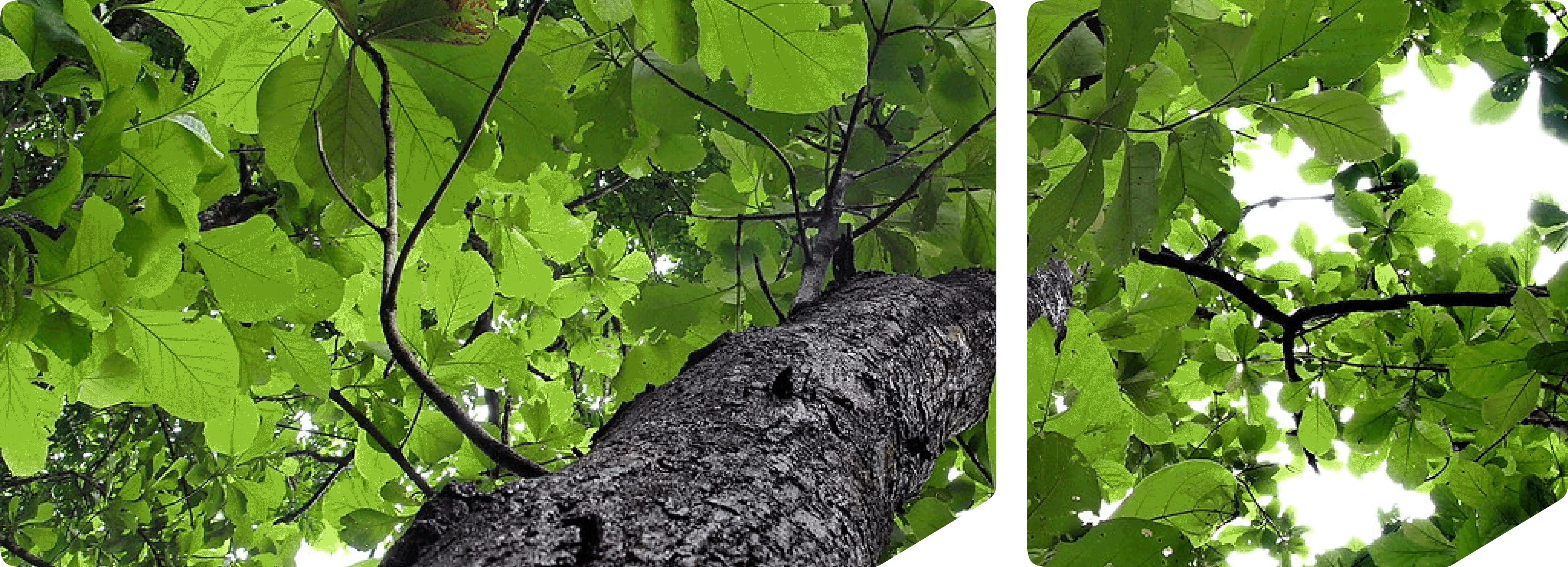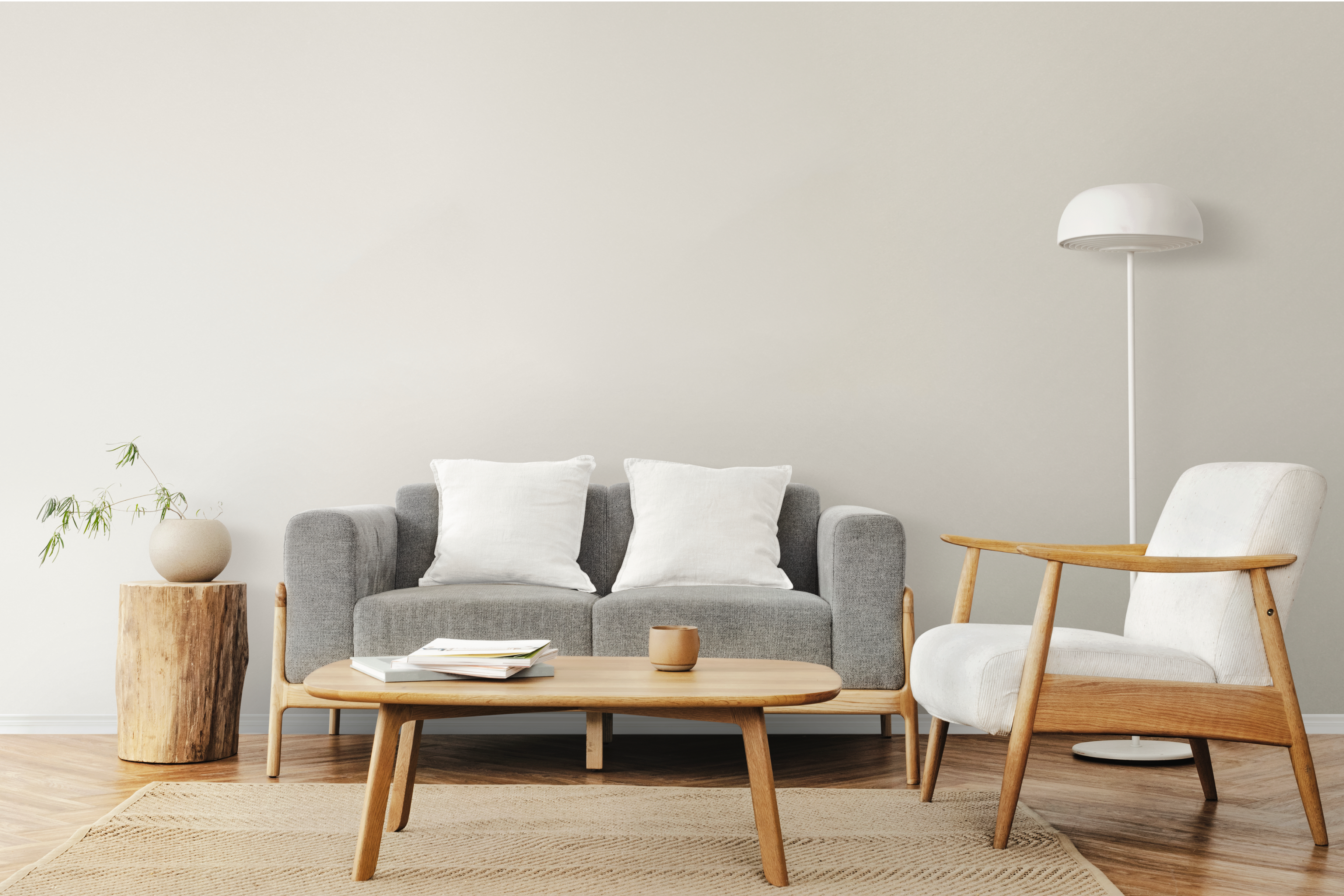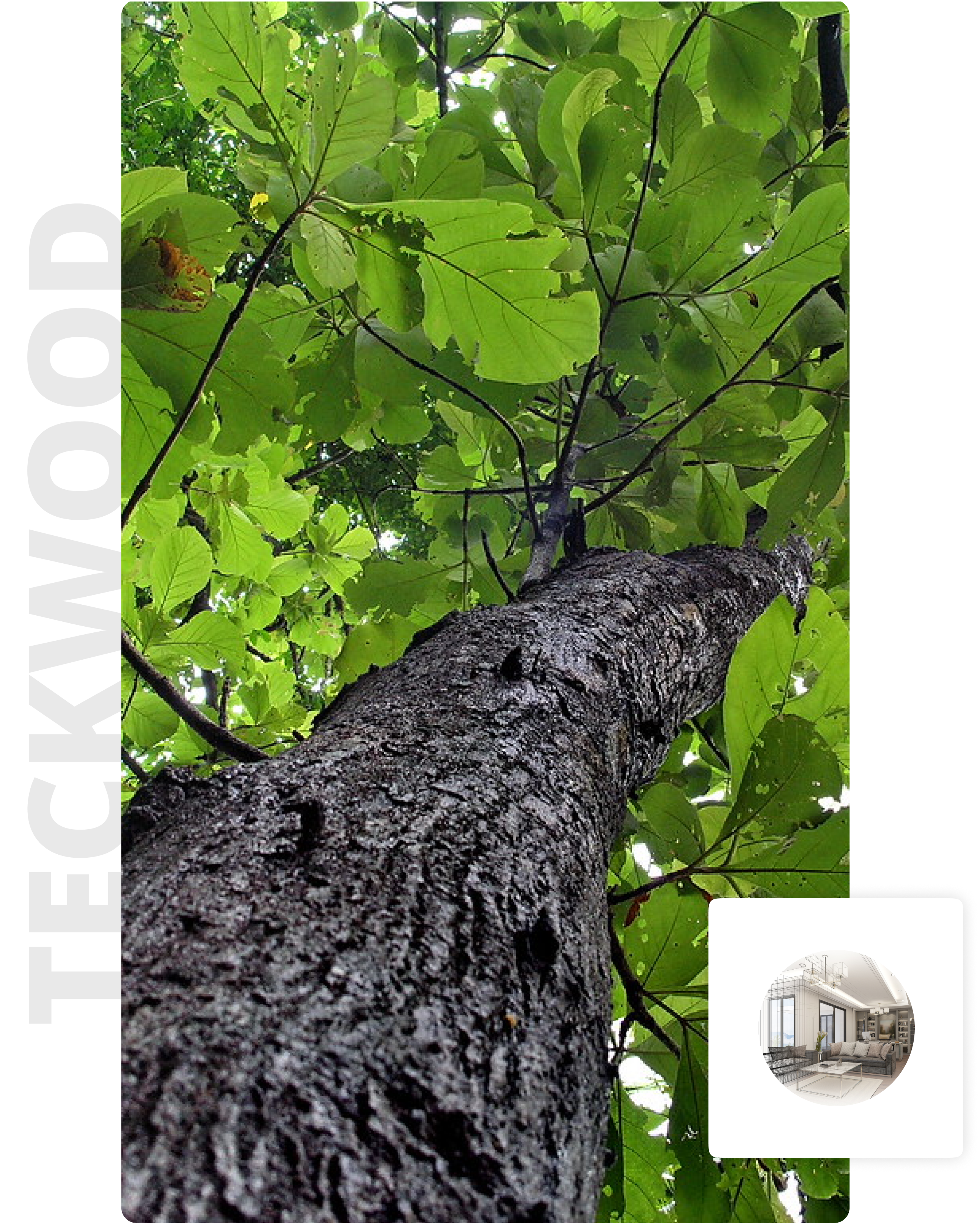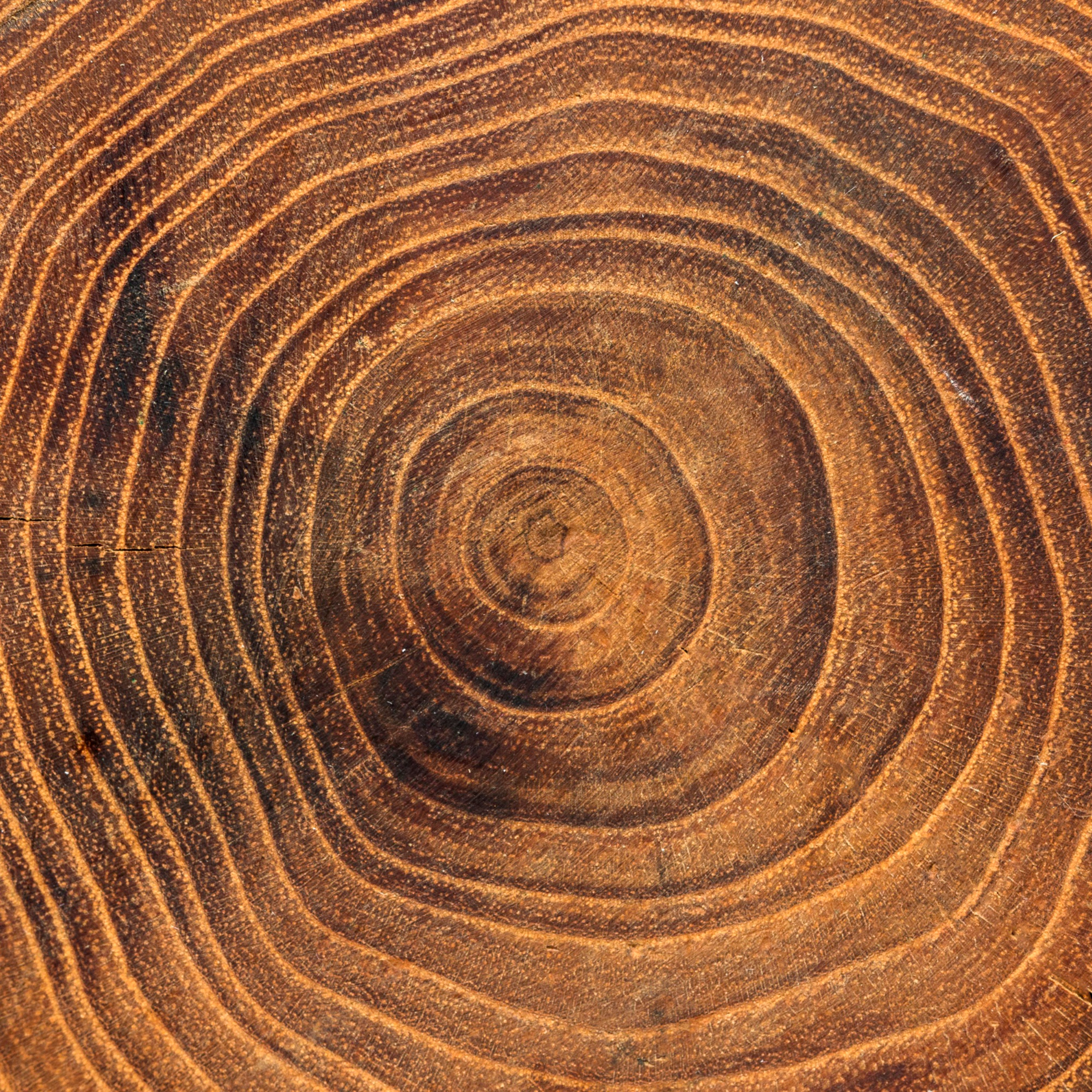About Teckwood Crafts Pvt Ltd
Introduction

Nilambur Teak, a unique type of teakwood, scientifically named Tectona grandis, originates from the Nilambur region in the southern part of the Indian state of Kerala. Revered for its remarkable characteristics, Nilambur Teak has been a valuable resource with a rich history and enduring significance. It is known for its exceptional quality and durability, making it one of the most sought-after varieties of teakwood in the world.
- Nilambur teak is the first forest species to receive Geographical Indication (GI) status.
- Geographical indication is a tag which helps to identify the place of origin, quality,
- reputation or other characteristics of products that are unique to the place.

Geography
- It lies within the Western Ghats, a mountain range renowned for its biodiversity
- The region is characterized by hilly terrain with slopes and valleys. The altitude varies, with elevations ranging from around 200 to 1,000 meters above sea level.
- The Nilambur Teak forest experiences a tropical monsoon climate, with high levels of rainfall during th e monsoon season
Ecology
- The Nilambur Teak forest is primarily known for its teakwood trees (Tectona grandis). These teak trees are tall and straight with a distinctive golden-brown heartwood, making them highly prized for timber. Additionally, the forest is home to a diverse range of plant species, including various hardwoods, evergreen trees, and underbrush. The fertile river deltas and floristic richness of the Western Ghats make the region the land of innumerable tree species of economic and ecological significance.
Biodiversity
- The Nilambur Teak forest is primarily known for its teakwood trees (Tectona grandis). These teak trees are tall and straight with a distinctive golden-brown heartwood, making them highly prized for timber. Additionally, the forest is home to a diverse range of plant species, including various hardwoods, evergreen trees, and underbrush. The fertile river deltas and floristic richness of the Western Ghats make the region the land of innumerable tree species of economic and ecological significance.y
Origin and History of
"A Timber Treasure"


About Teckwood
The Teak Family
The name Teak originated from tecca which was in use for centuries in south India. Teak belongs to the genus Tectona. Tectona The generic name Tectona derived from the Greek Word “Tecton” which means ‘carpenter’. Tectona has three species Tectona Grandis, Tectona hamiltonia & Tectona philippinensis. In India only Tectona Grandis occurs naturally while the other two species are restricted to south east Asian countries.

Nilambur Teakwood in the history of Uru making
The Uru, or dhow, is indeed a remarkable example of indigenous craftsmanship and maritime tradition in the Malabar region. Arab traders have been using dhows for centuries as trading vessels. These vessels played a crucial role in facilitating trade between the Arab world and various other regions.
When Arab traders discovered the wealth of Kerala, they recognized the region's valuable resources, including its solid timber, skilled craftsmen, and native technology. This discovery led to a shift in dhow construction to Beypore in Malabar. even today Urus are being manufactured and Exported to Arab nations from Beypore, highlighting the enduring legacy of this maritime tradition. Its built of Teakwood from Nilambur forest in earlier times. Uru is a remainder of the trade ties Malabar had established with the Chinese, Arabs, Jews, Romans and many others who came in search of the rich products of the the Portuguese Navigator Vasco da Gama had landed on the Malabar coast in 1498.
Uru(Dhow)
Uru(Painiting)
Uru (Making)
Miniature of Uru
Nilambur Teak Forest
Unique features of Nilambur Teak wood
Exceptional Timber Quality :
Nilambur Teak is renowned for its exceptional timber quality. The heartwood of these trees is rich in natural oils and resins, giving it a distinctive goldenbrown color. This heartwood is prized for its durability, stability, and resistance to decay and pests. It is considered one of the finest teak woods in the world for various woodworking applications
Straight and Tall Growth:
Nilambur Teak trees tend to grow tall and straight, with minimal branching. This growth pattern is ideal for producing long, straight logs of high-quality timber, which are particularly valuable in the timber industry.
Natural Regeneration:
Teak trees in the Nilambur region have a unique ability for natural regeneration. They produce seeds that readily germinate and establish new saplings in the forest, contributing to the sustainability of the teakwood resource.
Adaptability:
Nilambur Teak trees are adapted to the local climate and soil conditions in the Western Ghats. They can thrive in the region's tropical monsoon climate, which includes heavy rainfall during the monsoon season and dry periods during other times of the year.
Biodiversity Support:
Teak forests in Nilambur provide habitats for a diverse range of flora and fauna. The large, tall trees offer shelter and food for various animal species, contributing to the overall biodiversity of the region. the ecological functions of teak are negligible. Teak has a root system that is strong enough to hold the top soil rich in various elements. Falling leaves in summer keeps the soil moist. About 300 species of insects directly or indirectly depend on teak. Rich in elements like sodium and calcium, teak skin is also a diet for elephants. Providing space and protection for parasitic orchids are just some of the ecological functions.
Industrialization of Nilambur Teakwood

Export and Trade
Nilambur teakwood is the first forest species to receive Geographical Indication (GI) status by WTO, signifying its unique origin and qualities. Due to which the market value & global recognition has drastically increased. The tree planted in 1909 was auctioned at a whopping price of ₹39.25 lakh at the Nilambur Forest Depot on February 10, 2023. Nilambur Teakwood is an important export commodity, with international demand for its exceptional quality. It contributes to the timber trade, benefiting the local and national economies.
Furniture industry:
Nilambur Teak is widely used in the furniture industry for crafting high-quality and long-lasting wooden furniture. Its straight grain, rich color, and resistance to decay make it an ideal choice for manufacturing chairs, tables, cabinets, and other fine wooden furniture pieces. In addition to furniture, architects and builders often utilize Nilambur Teak in constructing homes and commercial buildings, using it for wooden flooring, doors, window frames, and decorative woodwork due to its strength and aesthetic appeal. Notably, it is used in historical heritage sites like Palaces, Religious establishments, frescoes and woodworks in and around kerala. Skilled artisans and woodworkers often turn to Nilambur Teakwood for creating intricate carvings, sculptures, and ornamental items due to its workability and ability to achieve fine finishes.
Shipping Industry
Nilambur Teak is the wood of choice for crafting both traditional and modern boats. Its innate resistance to water and decay renders it an exceptional material for boat construction, including decks, hulls, and interior components. Furthermore, its ability to withstand moisture and wear makes it an ideal selection for luxury yacht decking and cruise ship interiors. Notably, in Beypore, a coastal town on Kerala's northern coast that has a rich maritime history dating back to the first century C.E., the tradition of Uru making thrives. Building an Uru, a large wooden ship, is a meticulous process that spans at least four years and requires the collaborative efforts of over forty Khalasis. These impressive vessels are constructed using a special variety of teak sourced from the Nilambur Forest.
What are the benefits of a Nilambur Teakwood ?
Natural Beauty
Teakwood's rich, golden brown color and beautiful grain patterns give it a timeless and elegant appearance. The wood ages gracefully, developing a silvery patina over time, which many people find appealing.
Durability
Teakwood is renowned for its exceptional durability and longevity. It has natural oils and resins that make it highly resistant to decay, rot, and termite infestations. This durability ensures that teak furniture can last for generations.
Strength
Teakwood is one of the strongest hardwoods available, making it ideal for constructing sturdy and robust furniture. It can withstand heavy use and weight, making it suitable for both indoor and outdoor settings.
Low Maintenance
Teakwood furniture requires minimal maintenance. It naturally repels moisture and resists warping, cracking, and splitting. Routine cleaning and occasional oiling are usually sufficient to keep it looking its best.
Adaptability
Teakwood is versatile and can be used to create a wide range of furniture styles, from traditional to modern. It is suitable for crafting everything from dining tables and chairs to benches, loungers, and more.
Weather Resistence
Teakwood's resistance to moisture makes it an excellent choice for outdoor furniture. It can withstand exposure to rain, sun, and humidity without deteriorating, making it a popular choice for patio and garden furniture.
Environmental Sustainability
Teakwood sourced from sustainably managed plantations is an environmentally friendly choice. Many consumers appreciate furniture made from responsibly harvested teakwood.
Investment Value
High-quality teakwood furniture is often viewed as an investment due to its durability and longevity. It can retain or even increase in value over time, making it a wise choice for those looking for long-term value.
Low Allergenic Potential
Teakwood is less likely to cause allergies or skin irritations, making it a suitable choice for households with allergy-sensitive individuals.
Heritage and Tradition
Teakwood has a long history of use in furniture making, with a heritage that spans centuries. Owning teakwood furniture can be a symbol of timeless craftsmanship and tradition.

Teak What we focus ?
Superior Wood quality of Nilambur
- Higher heartwood and silica content (impacting appearance)
- Min 20 year old teak (for best heartwood proportion & wood density)
- Grade I logs with higher sawn timber recovery percentage (78.8%)
- Class 1A teakwood trees grow to a height of over 12 meters. This significant height is indicative of mature and well-developed teak trees, which often produce the best quality timber.
- Previous studies using AFLP markers indicate that natural teak population of Nilambur has a separate genetic identity among Southern Western Ghats populations matching with its popularly known phenotypic identity and wood quality.